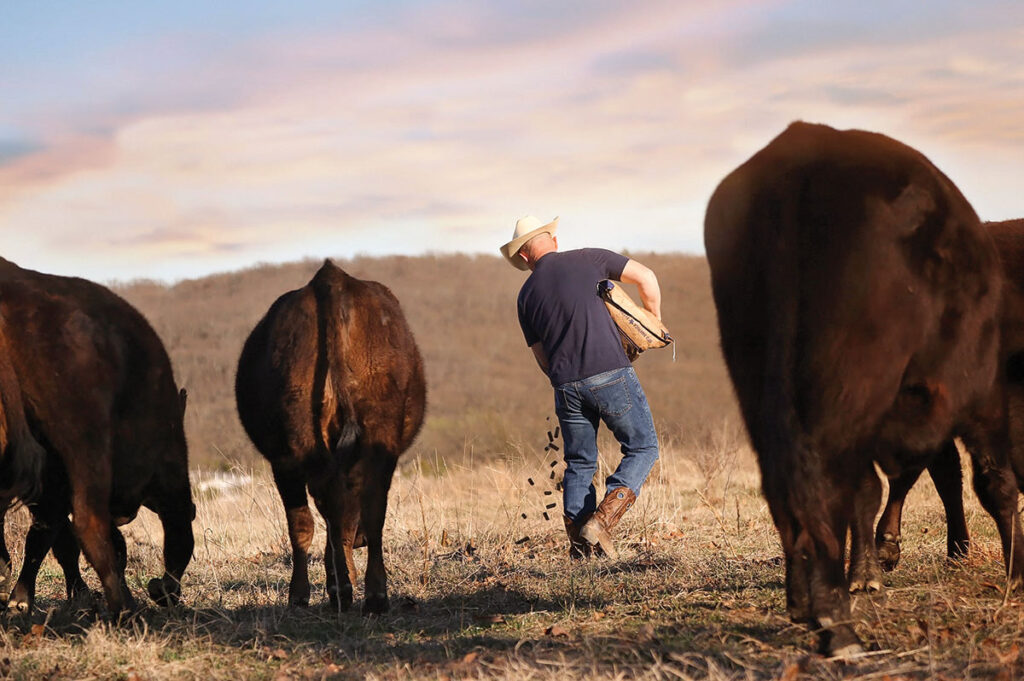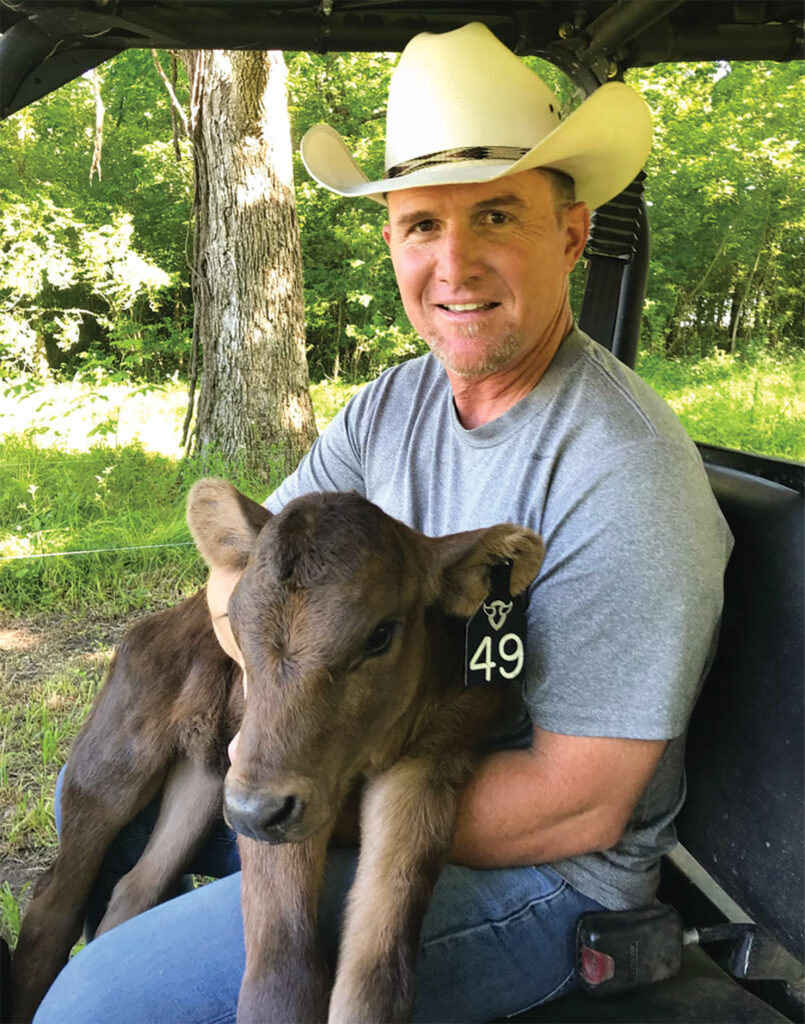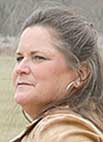
William Rucker saw the breeding and development of Wagyu beef as the future for his ranch
HASKELL, OKLA. – William Rucker has a problem. Well, not so much a problem, but more of a concern.
The 51-year-old has been working on a ranch where his father got him involved at the age of 19.
“I want to do this because the freedom, it’s hard work. The freedom and the ability to do what you want when you want to do it with your kids and your family, go hunting and go fishing, go do some work,” William said. “It’s what freedom is for us. And so I’m trying to build that to the next level for us.”
However, as William gets older, he is facing the same issue many farmers and ranchers around the country have had to deal with. With each passing generation becoming less and less interested in working in agriculture fields, the future of William’s ranch is something he thinks about.
“I want to have this operation producing enough income for two families. Mother Nature will beat you up unless you’re making money off it because you can’t have a full-time job and take that over. So you’re eventually going to have to sell it, or your kids are going to have to sell it, or your grandchildren are going to have to sell it.”
Not wanting to see that happen, William decided to transform his ranch from raising and selling Angus beef to Wagyu beef. It’s a decision he believes will set up the next generation if they choose to take that path.
And it all started with a simple meal in 2017.
“My brother brought it and it changed everything,” William said. “I’ve gotten pretty good over the last 20 years of making steaks, but I’ve never tasted anything like that.”
That one steak sent William on a deep dive research into Wagyu beef. When he was done, he was convinced Wagyu was the future of Rucker Ranch.
“We did some research on the breed. And there are some differences of course, but a cow is a cow,” William said. “If you find out what makes that cow tick and what makes that breed work and how you can get that level of beef, then the rest is just logistics.”
It took a little more than a year for William to make the complete transformation into Wagyu and he formed Oklahoma Wagyu LLC.
“We found two full-blooded Japanese bulls and purchased them,” William said. “And then we sorted our herd out to keep only the quality Angus mommas and got some more. We crossed that full-blooded Wagyu bull with the Angus cows and come up with a 50 percent product. We feed them on a 100 percent Wagyu regimen. So it gets the maximum out of that 50 percent genetics.”
Williams said they feed the cattle “a secret recipe designed by Wagyu experts for their three phases of growth.” They can grow up to 1,400 pounds before they are ready for the market.
When William first started raising Wagyu beef, it was a completely new frontier for him. Making a life decision like that doesn’t come without its risks if it doesn’t go right.
Despite that, William said he knew he was taking the correct path for him and his family.
“It was a considerable investment to switch over to this breed. And I actually went full time into the cattle operation, a thing like this, you can’t do part-time. I was part-time for a long time with my father when we did the Angus,” William said. “And because he was there on a full-time basis as a retiree, once he passed away in 2018, in order to keep the land in the family, we had to find a way to make a product that could finance that. And so this was the best way that we saw. And so, there were some nerves going in there. You quit your job and you got four kids.”
Even though he had a plan for Oklahoma Wagyu, everything William tried was almost like a roll of the dice on whether it was going to work or not.

“You can plan and plan and plan and the first thing that happens into your plan is you change your plan. So that goes with just about any business,” William said. “We did a significant amount of planning and then we’ve learned since. So it’s been a bit of a learning curve.”
Yet, William’s strategy has worked as well as he could hope for so far.
“Our beef was coming in. It was inconsistent last year and we figured out for the most part, the consistent part of it,” William said. “Now we’re trying to increase the genetic side of it. So it’s a learning process. There’s no static business plan that makes this work and it depends on your location. It depends on the soil you have, the hay you have, it depends on the land situation and the logistics of the land, where you have your fences and your setup. And there’s a lot of things that go into play in any farming operation, but certainly this.”
William knew the transition wouldn’t bring instant success for Oklahoma Wagyu. He said it will take four or five years before the ranch is in the black and making a profit.
“You’re getting rid of all your income-based animals and then a Wagyu calf when it hits the ground, it’s not ready for market for two years after that,” William said. “And if you miss some breeding spots and you don’t get your marketing right or you have some cattle deaths or anything can derail that to a certain extent.”
None of that took into account a global pandemic. It wasn’t something William could prepare for because, once again, it was all new ground for him.
“It’s ironic that we had this big passion and this big startup, and as soon as we were getting ready to fire everything up the pandemic hit,” William said. “But I don’t have a baseline to compare that to pre-pandemic because we weren’t selling any beef. So I would assume it affected me in some way. But then on the same thing, a lot of beef prices are going up because of the pandemic. And a lot of people were looking for healthier, faster and more reliable alternatives.”
Oklahoma Wagyu sold their first cuts of beef a year ago and sold out. New stock is coming in the final months of 2021.
“We’re only going to do 50 to 60 animals per year. I’m certain that I’ll be sold out way ahead of time,” William said. “I’ll have a certain amount that I put on the Wagyu website every month. And then the customers that are buying larger amounts, a seventh or a half or a whole animal, or even a quarter, those are increasing right now. The five animals I just took in, three of them are already sold.”
Besides the times his sons are able to help him, the running of Rucker Ranch and Oklahoma Wagyu is a one-man show. That means William has to make sure the operation runs as smoothly as possible“The calf is born here; the calf is raised here. I have to control the grass quality. I have to control the hay quality. I have to control the health of the mothers. I have to control the safety and the stress environment, make sure it’s low,” William said. “I have to control the medication. If an animal gets any kind of steroid or anything like that, he’s out of the program. So all natural. So we have to monitor all that stuff. So all the qualities based right here with my reputation, that’s probably the most valuable thing I have control of.”
William doesn’t see his ranch getting much bigger than 100 animals a year. He said that is the right size for a family-owned business to make a good living, but not get overwhelmed.
“That’s what happened with family farms all over the place, because it’s hard to make money in this business,” William said. “So we’ve found a way to add value and still have a small number of cows that’s manageable for one family. And if we can produce enough income, then you got instead of a grandson or a granddaughter or the next generation thinking, ‘Oh, I got to take care of this place now.’ Now you got kids fighting for it because they want to do it.”







